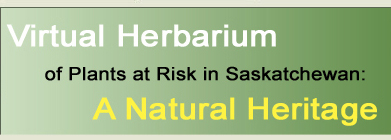
|

|

|

|

|

|

|
|
|
|
|
|
| Loiseleuria procumbens (L.) Desv. | Species Image Gallery (opens in a new window) |
||||||||||||||||||||||||||||||||||||||||||||
| TAXONOMY | |||||||||||||||||||||||||||||||||||||||||||||
| Family: | Ericaceae | ||||||||||||||||||||||||||||||||||||||||||||
| Genus: | Loiseleuria | ||||||||||||||||||||||||||||||||||||||||||||
| Species Synonyms: | Azalea procumbens L. Chamaecistus procumbens (L.) Kuntze Kalmia procumbens auct. comb. nov. ined. |
||||||||||||||||||||||||||||||||||||||||||||
| Common Names: | alpine azalea trailing azalea |
||||||||||||||||||||||||||||||||||||||||||||
| DISTRIBUTION | |||||||||||||||||||||||||||||||||||||||||||||
| Canada: | Mackenzie District – Keewatin District – Baffin Island, south to southern British Columbia – southwestern Alberta – northeastern Saskatchewan – northern Manitoba – James Bay – Labrador – Newfoundland – Nova Scotia | ||||||||||||||||||||||||||||||||||||||||||||
| Saskatchewan: | northeastern Saskatchewan; Hasbala Lake | ||||||||||||||||||||||||||||||||||||||||||||
| Ecoregion: | Selwyn Lake Upland, Tazin Lake Upland | ||||||||||||||||||||||||||||||||||||||||||||
| HABITAT | |||||||||||||||||||||||||||||||||||||||||||||
| Saskatchewan: | rocky tundra-meadows and open-wooded esker-ridge slopes | ||||||||||||||||||||||||||||||||||||||||||||
| Associated Species: | black spruce, jack pine, tamarack | ||||||||||||||||||||||||||||||||||||||||||||
| RARITY STATUS | |||||||||||||||||||||||||||||||||||||||||||||
| Provincial
Status According to Harms (2003): |
Endangered |
||||||||||||||||||||||||||||||||||||||||||||
| Nature Conservancy Status: | G5 S1 |
||||||||||||||||||||||||||||||||||||||||||||
| Saskatchewan
Species at Risk Status: |
None |
||||||||||||||||||||||||||||||||||||||||||||
| COSEWIC Status: | None |
||||||||||||||||||||||||||||||||||||||||||||
| Alpine azalea is endangered in Saskatchewan because it is rare and highly regionally restricted in the province. No immediate threats are known for this species. | |||||||||||||||||||||||||||||||||||||||||||||
| SPECIES DESCRIPTION | |||||||||||||||||||||||||||||||||||||||||||||
| Roots: | taproot slender | ||||||||||||||||||||||||||||||||||||||||||||
| Stems: | evergreen shrub, lying flat on the ground, branched, mat forming, rarely over 10 cm tall | ||||||||||||||||||||||||||||||||||||||||||||
| Leaves: | opposite, stalks 1 – 2 mm long, blades 2 – 8 mm long, elliptic to oblong, leathery, minutely woolly beneath along midvein and margins, margins rolled under | ||||||||||||||||||||||||||||||||||||||||||||
| Inflorescence: | umbrella-like; stalks short, erect | ||||||||||||||||||||||||||||||||||||||||||||
| Flowers: | sepals 5, green; petals 5, 3 – 4 mm long, broadly bell-shaped, lobes about equalling tube, white to pink; stamens 5, anthers opening lengthwise, not appendaged | ||||||||||||||||||||||||||||||||||||||||||||
| Fruits: | capsule opening along the septa; seeds many | ||||||||||||||||||||||||||||||||||||||||||||
| |||||||||||||||||||||||||||||||||||||||||||||